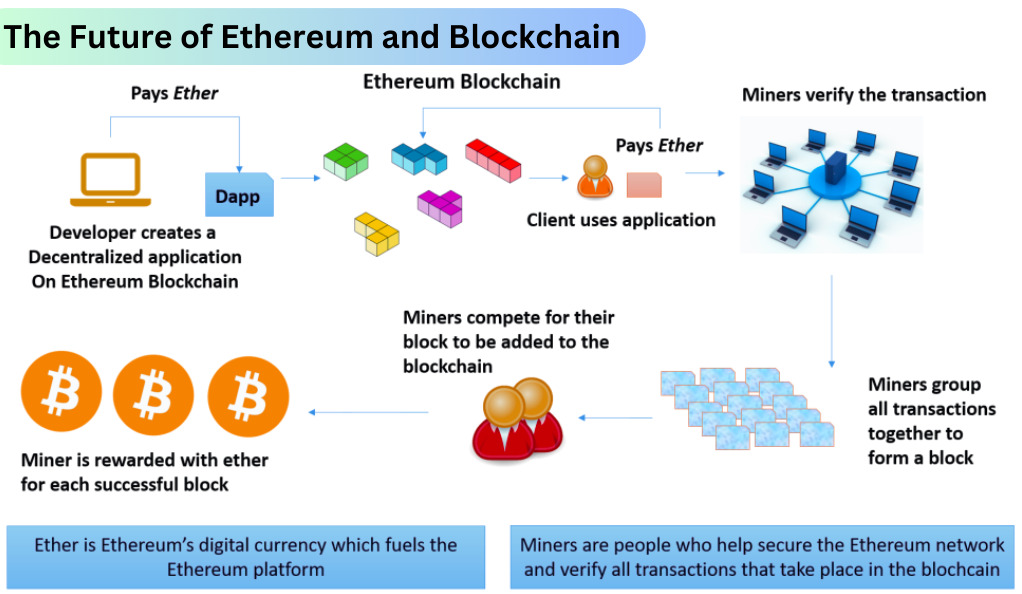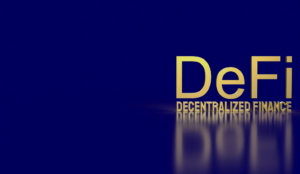Have you ever wondered how technology continues to evolve at such a rapid pace? Just when we thought the internet was the pinnacle of innovation, along came blockchain and Ethereum, shaking things up and promising a future where transactions are transparent, secure, and decentralized. But what exactly are they? Let’s dive in!
Blockchain: The Digital Ledger

What is Blockchain?
Imagine a ledger, but instead of being in a dusty old book, it’s digital and accessible to anyone. Blockchain is a series of linked records (blocks) that are chained together using cryptography. Each block contains a timestamp and transaction data, making it nearly impossible to alter once added.
Why is it Revolutionary?
Think about it: a system where data is transparent yet secure, without a central authority? It’s like having a library where everyone can read the books but can’t tamper with the content. This decentralization ensures trust and reduces the chances of fraud.
Ethereum: More Than Just a Cryptocurrency
- Ethereum vs. Bitcoin: While both Ethereum and Bitcoin operate on blockchain, they serve different purposes. Bitcoin is primarily a digital currency, whereas Ethereum is a platform that allows developers to build and deploy decentralized applications (DApps) using smart contracts.
- Smart Contracts: Imagine signing a contract, but instead of paper and pen, it’s code. Smart contracts automatically execute when certain conditions are met, eliminating the need for intermediaries. It’s like having a vending machine: you insert a coin, choose your snack, and the machine does the rest.
The Power of Decentralized Applications (DApps)
What are DApps?
Built on the Ethereum platform, DApps are applications that run on a peer-to-peer network. Unlike traditional apps, they aren’t controlled by a single entity, ensuring that they remain transparent and resistant to censorship.
Real-world Applications
From decentralized finance (DeFi) platforms to gaming and even social media, DApps are transforming industries. Imagine a world where you have complete control over your data, assets, and decisions. Sounds dreamy, right?
Potential Challenges and Criticisms
- Scalability Issues: With great power comes great responsibility. As the popularity of Ethereum and blockchain grows, so do concerns about their ability to handle a large number of transactions. It’s like a highway during rush hour; too many cars can lead to congestion.
- Environmental Concerns: Mining Ethereum requires a significant amount of energy, leading to concerns about its environmental impact. It’s essential to weigh the benefits against the potential harm, much like considering the carbon footprint of driving a car.
The Future of Ethereum and Blockchain

Ethereum 2.0 and Proof of Stake
The Ethereum community is actively working on solutions to address its challenges. Ethereum 2.0, for instance, aims to shift from a proof of work to a proof of stake system, which could reduce energy consumption.
Beyond Cryptocurrency
While blockchain started with cryptocurrency, its potential applications are vast. From supply chain management to voting systems, the possibilities are endless. Imagine a world where every transaction, big or small, is transparent and secure. We’re on the brink of that reality.
Conclusion
Ethereum and blockchain are more than just buzzwords; they’re the future of technology. As we continue to explore their potential and address their challenges, one thing is clear: they’re here to stay. So, are you ready to be part of this exciting journey into the future?
FAQs
While both Ethereum and Bitcoin are based on blockchain technology, they serve distinct purposes. Bitcoin is primarily a digital currency, whereas Ethereum is a platform that facilitates the creation and deployment of decentralized applications (DApps) using smart contracts.
Smart contracts are self-executing contracts with the terms of the agreement directly written into code. They automatically execute actions (like transferring funds) when predefined conditions are met, eliminating the need for intermediaries.
DApps, or decentralized applications, are applications that run on a peer-to-peer network, typically built on platforms like Ethereum. Unlike traditional apps that are controlled by a single entity (like an app developer or company), DApps operate in a decentralized manner, ensuring transparency and resistance to censorship.
Yes, there are concerns about the energy consumption associated with Ethereum, especially in its mining process. However, the Ethereum community is actively working on solutions, such as transitioning to Ethereum 2.0, which will adopt a proof of stake system to potentially reduce its environmental footprint.
Ethereum 2.0 is an upgrade to the Ethereum blockchain. It aims to improve the scalability, security, and sustainability of the network. One of its primary changes is the shift from a proof of work to a proof of stake consensus mechanism, which is expected to significantly reduce energy consumption.
Investdigital is committed to delivering unbiased and reliable information on subjects like cryptocurrency, finance, trading, and stocks. It's crucial to understand that we do not possess the capability to offer financial advice, and we actively encourage users to conduct their own comprehensive research.
Read More



